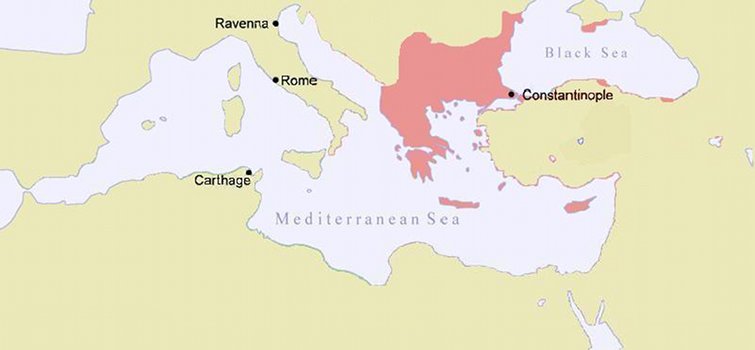Classical Knowledge
Explain how Europe benefited from cultural diffusion during the period c. A.D. 1000 - 1500.

The Byzantine Empire in 1095 on the eve of the First Crusade.
A Renaissance of Byzantine Letters and Arts
The increased contact between Byzantines and Crusaders led to a reassessment of the Hellenic identity and heritage. In Late Antiquity, Hellene (Greek) was a derogatory term associated with worshipers of the pagan gods. Byzantines thus called themselves Romans rather than Greeks or Byzantines, although the imperial language was Greek.
The Crusades created a situation that prompted Byzantines to rediscover their Hellenic pagan heritage. As result of Crusader rule in Greece, Byzantine intellectuals from the 13th century saw themselves as heirs to the Greek pagan tradition, as well as to the church fathers and the Roman political legacy.
Prior to the Crusades, Byzantine emperors had increased imperial patronage of letters and arts. In letters, Byzantine scholars still edited and commented on the classical works such as Aristotle, Euclid, & Galen.
In philosophy, Michael Psellus revived interest in the study of Plato, penning important commentaries on Platonic dialogues.
Byzantine scholars, the scholiasts,
collected information about ancient authors, edited texts, and published epitomes.
Patriarch John Xiphilinus, a leading intellectual, published an epitome of the Roman historian Cassius Dio.
In 1047, Emperor Constantine IX reorganized the imperial school of law and philosophy that offered a possible Byzantine equivalent of a Western-style university. But universities failed to emerge because of sporadic imperial patronage and a conservative intellectual climate in the 12th century.
Members of the Byzantine literate elite had learned by heart, Homer and Athenian dramas. This literate culture percolated to the lower levels of society,
as evidenced by the popularity of hagiography (saints' lives) and the epic poem of Digenes Akrites, the Christian Achilles.

Medieval Constantinople
Classical literary works were not readily transmitted to Western Europe, because of the lack of Latin translators. Few bilingual scholars were known in the 12th century, and Latin translations of Greek works were only possible when the situation changed in the 14th and 15th centuries.
Christian scholars from Europe began visiting Muslim libraries in Toledo, Spain. It was the Muslim assisted translation of Aristotle followed by those of Galen, Euclid, Ptolemy, and other Greek authorities and their integration into the university curriculum that created what historians have called the scientific renaissance (rebirth or renewal) of the 12th century.
Certainly the double, sometimes triple translation (Greek into Arabic, Arabic into Latin, often with an intermediate Castilian Spanish vernacular: local language) is one of the most fruitful scholarly enterprises ever undertake. All at once, Europeans acquired a huge new body of knowledge on science, philosophy, law, and religion.
With the capture of Constantinople in 1204, Westerners acquired artworks and manuscripts, initiating a cultural exchange that contributed to the Florentine Renaissance in the 15th century. In response, Byzantine writers redefined their identity as Hellenes.
Crusading thus led to the rediscovery of the Hellenic heritage by both Christian worlds (Catholic and Orthodox) and sharpened the sense of identity of Western Europeans, which would help lead to the Renaissance.
